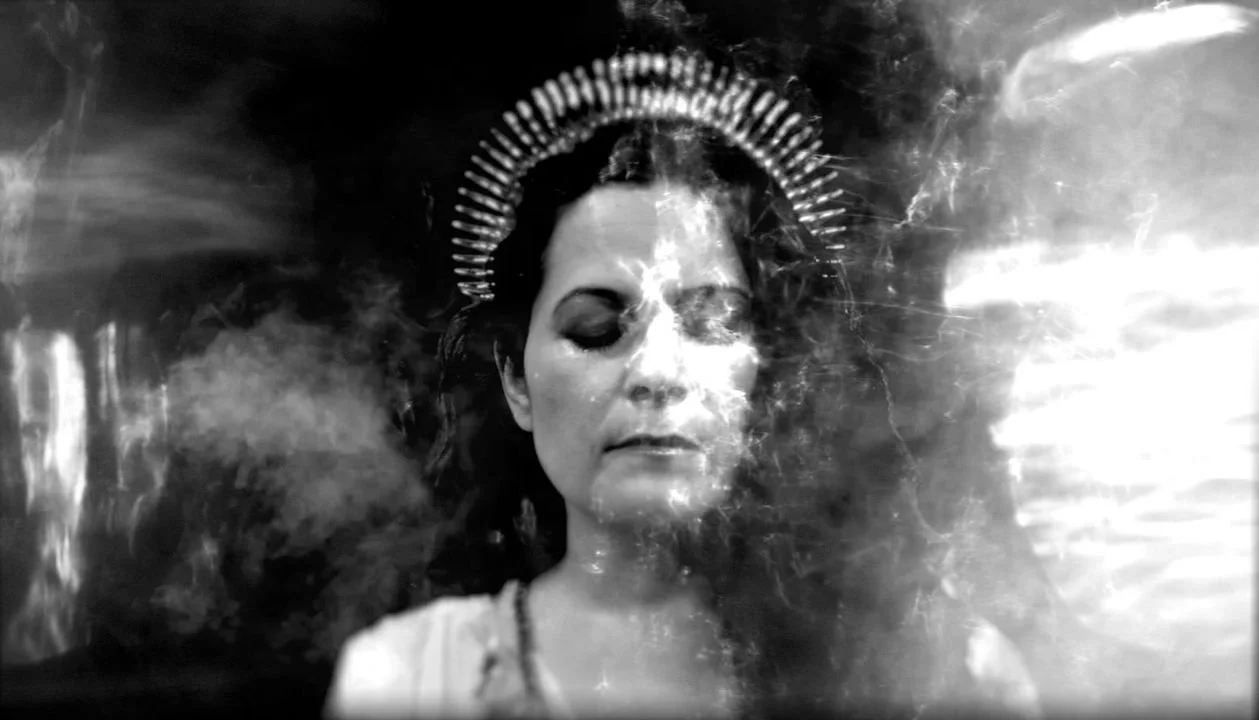Review: Interdisciplinary The Queen of Carthage shifts fluidly between empowerment and transcendence
Early Music Vancouver Summer Festival and re:Naissance premiere boldly mixes ancient Dido myth and Baroque music with contemporary dance, video, and sounds
A projection by projection designer Camilla Tassi for The Queen of Carthage
Early Music Vancouver and re:Naissance presented The Queen of Carthage on July 27 at SFU Woodward’s Goldcorp Centre for the Arts. No remaining performances
THE QUEEN OF CARTHAGE made for a bold and beautifully realized opening to the Early Music Vancouver Summer Festival on Thursday night—one that sent a clear signal that the organization is intent on showing Baroque music’s connections to the present day.
In the ambitious interdisciplinary production coproduced with trailblazing re:Naissance and artistic director Debi Wong (working with EMV’s Suzie LeBlanc), that message played out both thematically and aesthetically. Even the industrial-feeling venue—far from an ornate Baroque opera house—also served to place the production squarely in the here and now.
The creative team recast the tragic queen from the ancient myth (and Henry Purcell opera) Dido and Aeneas through a feminist lens, as a BIPOC leader of complexity and resilience. That group of artists onstage and behind the scenes was made up almost entirely of women, including stage director Stephanie Wong and music director Catalina Vicens. Dancers Marisa Gold and Juolin Lee often underscored the strength and power of the character, with reaching arms and turning forms, later suggesting Dido’s downfall with glitching, jerking limbs.
At the centre of it all was exquisite Mexican mezzo-soprano Cecilia Duarte as the queen, a deeply expressive singer who built to gorgeous crescendos in Purcell’s “Dido’s Lament”, and added just the right flow to ornamentation that felt less fussy than naturally emotive.
The repertoire, played on early instruments by EMV’s polished Festival Players, seamlessly wove in contemporary pieces that echoed, refracted, and thoroughly deconstructed Baroque sound. Robyn Jacobs’s haunting opener, “When the Memory Dies With the Body, It is Still Held in Time” featured Vicens’s otherworldly portative organ, Antoine Mallette-Chénier’s crystalline triple harp, and Adrienne Hyde’s gorgeous lirone—a carved artwork in itself. Vicens’s resonant keyboard played off rhythmic strings to absolute otherworldly effect in Jessica McMann’s “Blood, Fire, Flames”.
And yet there were the moments of pure Baroque, with all the aching transcendent beauty that you want from an early-music concert. That was particularly true of John Dowland’s exquisite four-century-old Lachrimae Antiquae, with its sighing organ and its strings’ expressive phrasing. A mesmerizing and transportive highlight.
Projection designer Camilla Tassi built a timeless, hallucinatory world through imagery of galaxies of stars, moon eclipses, rushing water, glowing fire embers, and, eventually, ethereal shots of Duarte as the queen. The screen also featured intertitles that indicated the state of our protagonist— “Dido, the Emperor”; “Dido, the Outcast”; “Dido, the Dreamer”, et cetera. (One concertgoer commented that it was a pity there weren’t surtitles, and point taken—but perhaps more text would have taken away from the dreamlike feel of the piece.)
Instead of tragedy and the sacrificial heroine, Wong built the music and imagery to an epilogue of empowerment, the dancers crowning the queen again in the afterlife—much the way this production reasserts Dido’s place in mythology. This was a production that made you reassess the stories we're told—and the operas we consume—in the most poetic of ways.













